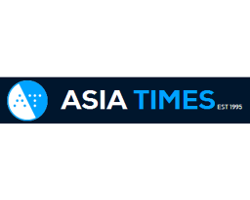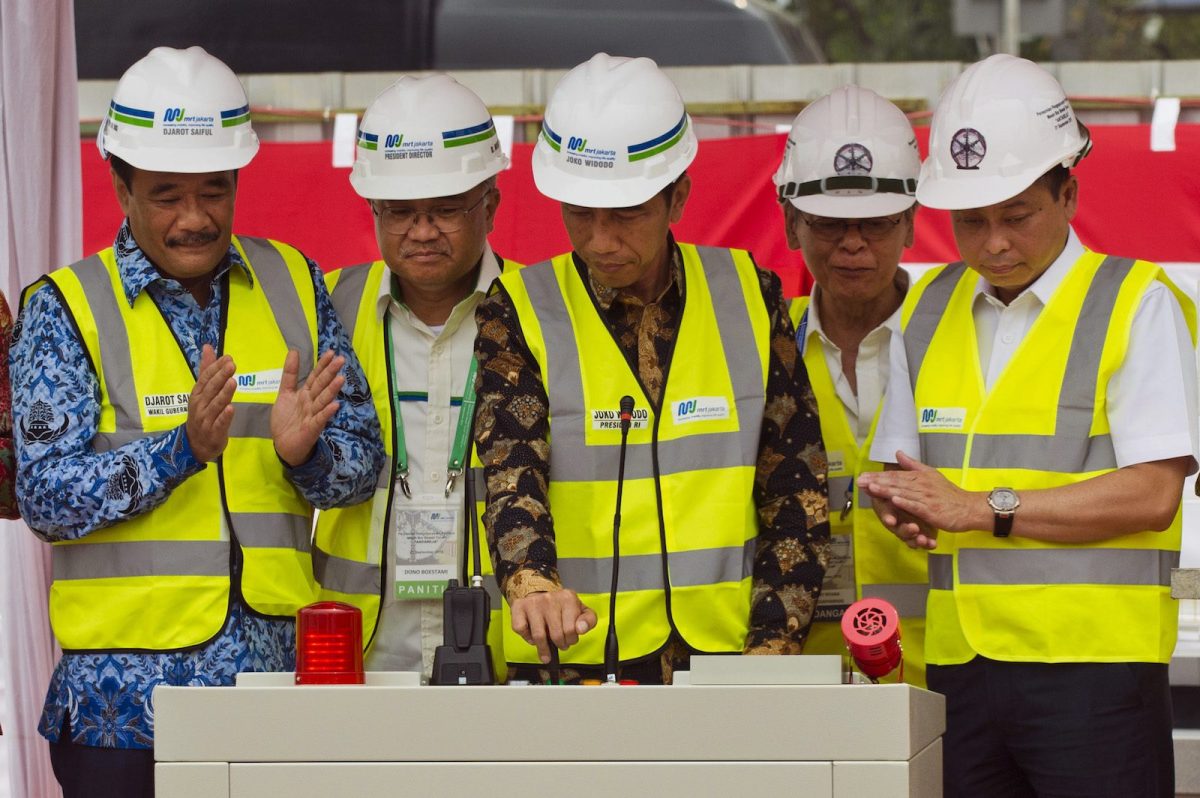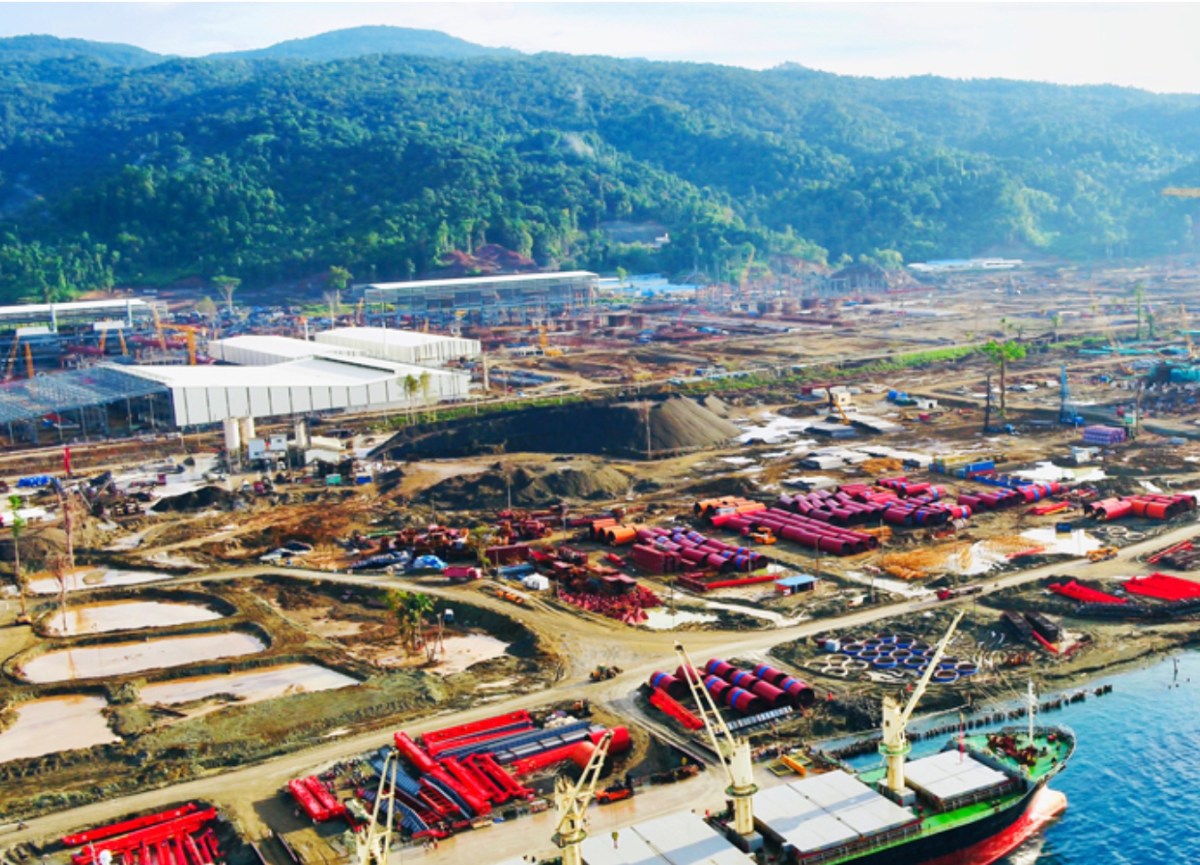Indonesia Import Surge Signals Industrial Transformation

By John McBeth
January 13, 2022 - Australian exports of iron ore and coking coal to Indonesia have increased dramatically as Southeast Asia’s biggest economy broadens its fast-growing industrial base and a booming construction sector establishes itself as a major contributor to gross domestic product (GDP).
Indonesia was only Australia’s 13th largest export market and 16th largest source of imports in 2020, belying the promising trade potential between the two neighbors. But the last year may well have served as a game-changer in the relationship.
While Indonesia’s non-oil and gas exports rose by only a modest 14%, imports rocketed a record 105%, partly on the back of a huge surge in wheat imports that restored Australia’s position as Indonesia’s largest supplier of the grain.
After two poor years due to drought in some of the island continent’s largest wheat-growing areas, the value of Australian wheat imports to Indonesia rose from $218 million in 2020 to more than $1.2 billion in the first nine months of 2021.
More significantly for the future of Indonesian industry, however, has been the surge in exports of pulverized coal (114%) and iron ore concentrate (174%) to meet demands for more steel production, mainly to be used in President Joko Widodo’s ambitious infrastructure program.
Looming on the bilateral trade horizon is a likely explosion of demand for West Australia’s huge store of lithium and other minerals that will be needed to launch Indonesia as a major global producer of ion batteries and electric vehicles.
Australia supplied 5% of all Indonesian non-oil and gas imports in 2021, the highest percentage figure since 2007 and further evidence of the complementary nature of their economies – even if the trade balance is strongly tilted in Canberra’s favor as the pandemic keeps Australian tourists away Bali.

Indonesian President Joko Widodo (C) switches on a tunnel boring machine for the Mass Rapid Transport system in the capital city during a launch ceremony on September 21, 2015.
Photo: AFP / Romeo Gacad
Overall, however, Indonesia recorded a provisional 43% increase in global exports in 2021, reaching about $230 billion or more than $60 billion higher than the previous year as a result of consecutive monthly trade surpluses going back to April 2020.
Palm oil and coal have been Indonesia’s two main exports for more than a decade, but nickel-based stainless steel has been the big mover over the past two years as three Chinese-operated complexes in Central and Southeast Sulawesi and Maluku shift into high gear.
Indonesia last year overtook India as the world’s second-largest stainless steel maker with a total production of 4.2 million tonnes, a 75% increase over 2020 but still short of the 5.5 million tonnes of current installed capacity.
Although Indonesia exported about 400 million tonnes of generally lower-grade thermal coal last year, making it the world’s largest exporter, it imported nearly four million tonnes of high-calorific-value coking coal needed for its blast furnaces.
About 55% of that originates in Russia, shipped from Nakhodka, the world’s largest coal-handling terminal on the Sea of Japan. But West Australia now accounts for 24% of Indonesia’s requirements, with shipments worth more than $900 million in 2021.
Although Indonesia has rich reserves of metallurgical coal, it is concentrated in the remote reaches of Central Kalimantan with the sole egress being by shallow-drought barge 600 kilometers down the Barito River to the South Kalimantan capital of Banjarmasin.
Even then, there are major obstacles. In the dry season, the river often becomes too shallow and during the wet season barges are often have to wait for the water level to drop to allow them to pass under an old, low-slung bridge 500 kilometers north of Banjarmasin.
Adaro Energy, owner of one of the two newly-opened coking coal mines, has been working on a 40-kilometer road through some of Borneo’s most inhospitable territory from its Lampunut mine to the East Kalimantan town of Melak on the much larger Mahakam River to the east.
That would open up a basin containing billions of tonnes of coking coal, which unlike thermal coal – and despite a significant increase in global recycling – remains integral to the only technology available in mass-producing steel.
But work on the project stalled in 2019 and Adaro has since focused on improving the 72-kilometer access road from Lampunut to the company’s Barito River port of Tuhup, which will eventually be upgraded to handle five million tonnes a year.
Adaro president commissioner Edwin Soeryadjaya is confident the Melak road will eventually go ahead, linking up with coal operator Gunung Bara Utama’s (GBU) existing haulage road for the final 70 kilometers to the Mahakam, Kalimantan’s second-biggest waterway.
But he says that won’t happen until legal issues are resolved over the state’s seizure of GBU’s assets in the wake of owner Heru Hidayat receiving a life sentence for his role in the $1.1 billion corruption case involving insurer PT Asuransi Jiwasraya.
Meanwhile, subsidiary Adaro MetCoal currently produces 1.7 million tonnes a year, adding to 1.5 million tonnes mined by the Astra Group’s PT Suprabari Mapindo Mineral (SMM), lying north of Lampunut.
Adaro also has a major stake in Kestrel Coal Resources, which produces 6.5 million tonnes a year from a coking coal mine it bought in Central Queensland in 2018. The deposit holds up to 158 million tonnes in reserves, one of the largest in the world.
Adaro and Astra export most of their domestic coking coal production because of the higher price on the often-volatile world market, where Fitch Solutions forecasts it will range from $165 to $225 a tonne this year.
Unlike thermal coal, coking coal is not affected by the government’s domestic market obligation (DMO) that compels producers to sell 25% of their output to state power utility Perusahaan Listrik Negara (PLN) at half the going rate.
Indonesia’s demand for steel has expanded at a high rate in recent years, spearheaded by Widodo’s unprecedented infrastructure program that despite the pandemic shows little sign of slowing down in his final three years in office.
According to Statista calculations, construction accounted for 10.71% of GDP in 2020, behind manufacturing (19.8%), agriculture, forestry and fisheries (13.7%) and wholesale and retail trade (12.9%).

A Chinese-financed steel facility in Indonesia.
Image: Handout
Indonesia’s steel industry has been built around state-owned Krakatau Steel, opened in 1992 and lying close to the Sunda Strait in western Java, which now produces four million tonnes a year, or about a third of the national output.
According to the Indonesia Iron & Steel Industry Association (IIASA), steel consumption is expected to rise to 22.7 million tonnes in 2024, with infrastructure projects generally accounting for 40% of the final figure and other construction work for another 38%.
The association says a return to a national economic growth rate of 5.3%, lower than the 5.5% forecast by Bank Indonesia last November, will see steel consumption growing by 7%, compared with a 5.3% contraction in 2020.
Compared with the previous year, production in 2020 actually increased by 19.6% to 13 million tonnes despite a downturn in demand from the vehicle, shipping and metal goods industries, all hit hard by the Covid-19 pandemic.
But IIASA data shows that was balanced by a sharp increase in sales of wire rod, steel sections and pipe for state-funded toll roads and other infrastructure which received a major budget-spending boost to energize economic growth as the country emerges from the pandemic.
Although 2021 figures are unavailable, IIASA calculates half-year consumption reached 6.7 million tonnes, suggesting the final figure was in the 14-15 million tonne range. Last December, it projected growth of 7-8% to 16.3 million tonnes this year.

